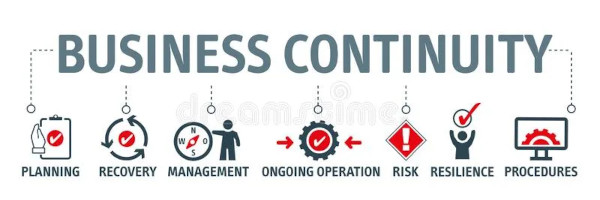Business Continuity
| Public Safety | ||||||||||||||||||||||||||
|---|---|---|---|---|---|---|---|---|---|---|---|---|---|---|---|---|---|---|---|---|---|---|---|---|---|---|

| ||||||||||||||||||||||||||
| Sectors | Public Safety | |||||||||||||||||||||||||
| Contact | Wilfred Pinfold | |||||||||||||||||||||||||
| Topics | ||||||||||||||||||||||||||
Activities
| ||||||||||||||||||||||||||
- Authors
Business continuity refers to the processes and procedures an organization puts in place to ensure that critical business functions can continue during and after an unexpected disruption, such as a natural disaster, cyber attack, or power outage.
It involves identifying potential risks and vulnerabilities, developing plans to mitigate or respond to those risks, and regularly testing and updating those plans to ensure they are effective. The goal of business continuity is to minimize the impact of a disruption on the organization's operations and customers, and to quickly restore normal business operations. This can include activities like maintaining backup systems and data, implementing disaster recovery procedures, and developing incident management and communication plans.
There are several steps that a community can take to ensure business continuity:
- Conduct a risk assessment: Identify potential risks and vulnerabilities that could disrupt local businesses and develop plans to mitigate or respond to them. This can include natural disasters, cyber attacks, power outages, and other disruptions.
- Develop emergency response plans: Work with local businesses to create emergency response plans that outline steps to take in the event of a disruption. These plans should include contact information for key personnel and emergency services, procedures for shutting down equipment and facilities, and information on how to access backup systems and data.
- Promote communication and collaboration: Encourage local businesses to share information and resources with one another, and to work together to develop plans and strategies for continuity.
- Provide training and education: Offer training and educational resources to local businesses on topics such as emergency management, cyber security, and risk management. This can help them to better prepare for and respond to disruptions.
- Create a Business Continuity Network: Develop a network of businesses, organizations and government agencies to share information and resources, to collaborate on emergency response plans, and to provide support to affected businesses during and after a disruption.
- Establish a Community Emergency Response Team: Develop a community emergency response team (CERT) of volunteers who can assist local businesses and organizations during a disruption.
- Review and update plans regularly: Regularly review and update emergency response plans and procedures to ensure they are current and effective.
- Encourage businesses to have a crisis management and communication plan.
By working together, local businesses, organizations and government agencies can take steps to minimize the impact of disruptions on the community's economy and ensure a faster recovery.





